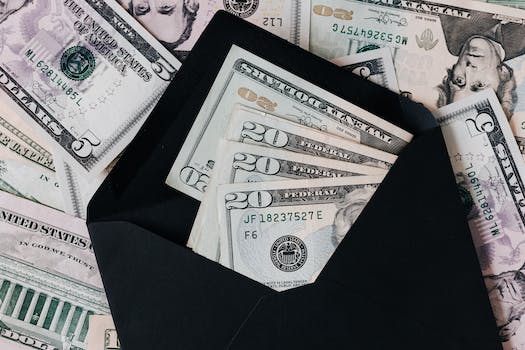How To Save Money On A Car
“Drive smarter, not harder: Tips for saving money on your car expenses.”
Introduction
Introduction: Saving money on a car is a smart financial decision that can help you reduce your expenses and increase your savings. Whether you are buying a new or used car, there are several ways to save money on your purchase and ongoing expenses. In this article, we will discuss some tips and strategies that can help you save money on a car.
Negotiating Tips for Buying a Car
Buying a car can be a daunting task, especially when it comes to negotiating the price. However, with a few tips and tricks, you can save money on your next car purchase.
Firstly, do your research. Before you even step foot in a dealership, make sure you know the market value of the car you are interested in. This will give you a good idea of what a fair price is and will help you negotiate with confidence. You can use websites such as Kelley Blue Book or Edmunds to get an estimate of the car’s value.
Next, be prepared to walk away. If the dealer is not willing to negotiate on the price, don’t be afraid to walk away. There are plenty of other dealerships and cars out there, and you don’t want to overpay for a car just because you feel pressured to make a purchase.
When negotiating, start with a low offer. This will give you room to negotiate and will show the dealer that you are serious about getting a good deal. However, make sure your offer is reasonable and based on the research you have done.
Another tip is to negotiate the price of the car before discussing financing. If you negotiate the price first, you can then focus on getting the best financing deal possible. This will save you money in the long run as you will be paying less interest on a lower-priced car.
It’s also important to be aware of any additional fees that may be added to the price of the car. These can include documentation fees, dealer preparation fees, and advertising fees. Make sure you know what these fees are and negotiate them down if possible.
If you have a trade-in, make sure you know its value before going to the dealership. You can use websites such as Kelley Blue Book or Edmunds to get an estimate of your trade-in’s value. This will give you an idea of what to expect and will help you negotiate a fair trade-in value.
Finally, don’t be afraid to ask for extras. Dealerships may be willing to throw in extras such as free oil changes or a warranty extension to sweeten the deal. However, make sure you are not paying for these extras in the price of the car.
In conclusion, negotiating the price of a car can be intimidating, but with a little research and preparation, you can save money on your next car purchase. Remember to do your research, be prepared to walk away, start with a low offer, negotiate the price before discussing financing, be aware of additional fees, know the value of your trade-in, and ask for extras. By following these tips, you can get a great deal on your next car.
The Pros and Cons of Leasing vs. Buying a Car

Are you in the market for a new car but worried about the cost? It’s no secret that buying a car can be a significant expense, but there are ways to save money. One of the biggest decisions you’ll need to make is whether to lease or buy a car. Both options have their pros and cons, so it’s essential to weigh them carefully before making a decision.
Leasing a car can be an attractive option for those who want a new car every few years. When you lease a car, you’re essentially renting it for a set period, usually two to three years. During this time, you’ll make monthly payments, but they’ll typically be lower than if you were buying the car outright. Additionally, you won’t have to worry about selling the car when you’re ready for a new one, as you’ll simply return it to the dealership.
However, there are some downsides to leasing a car. For one, you’ll have mileage restrictions, which can be a problem if you have a long commute or like to take road trips. Additionally, you’ll need to keep the car in good condition, as any damage beyond normal wear and tear will result in additional fees. Finally, you won’t own the car at the end of the lease, so you won’t have any equity in it.
Buying a car, on the other hand, can be a better option for those who want to own their vehicle outright. When you buy a car, you’ll make monthly payments until the car is paid off, at which point you’ll own it. This can be a great feeling, as you’ll have equity in the car and can sell it or trade it in when you’re ready for a new one.
However, buying a car can be more expensive in the short term. Your monthly payments will likely be higher than if you were leasing, and you’ll need to come up with a down payment. Additionally, you’ll be responsible for any repairs or maintenance the car needs, which can add up over time.
So, which option is right for you? It depends on your individual needs and preferences. If you like having a new car every few years and don’t mind the restrictions that come with leasing, it may be the right choice for you. On the other hand, if you want to own your car outright and don’t mind the higher monthly payments, buying may be the better option.
Regardless of whether you choose to lease or buy, there are other ways to save money on a car. One of the best ways is to do your research and shop around. Don’t just go to one dealership and accept their offer – get quotes from multiple dealerships and compare them. Additionally, consider buying a used car instead of a new one. Used cars can be just as reliable as new ones, and they’re often much cheaper.
Another way to save money on a car is to negotiate. Don’t be afraid to haggle with the dealership – they want to make a sale, and they may be willing to lower the price or throw in some extras to get you to buy. Additionally, consider financing through a credit union or bank instead of the dealership. You may be able to get a lower interest rate, which can save you thousands of dollars over the life of the loan.
In conclusion, there are pros and cons to both leasing and buying a car. It’s important to weigh these carefully and consider your individual needs before making a decision. Additionally, there are other ways to save money on a car, such as shopping around, buying used, and negotiating. By doing your research and being smart about your purchase, you can save thousands of dollars on your next car.
How to Find the Best Car Insurance Deals
When it comes to owning a car, there are many expenses to consider. From gas and maintenance to car payments and insurance, the costs can quickly add up. However, there are ways to save money on your car expenses, and one of the most significant ways is by finding the best car insurance deals.
First and foremost, it’s essential to understand the different types of car insurance coverage available. Liability insurance is the minimum requirement in most states and covers damages you may cause to other people or their property. Collision insurance covers damages to your own vehicle in the event of an accident, while comprehensive insurance covers damages from non-collision incidents such as theft, vandalism, or natural disasters.
Once you understand the different types of coverage, it’s time to start shopping around for the best deals. One of the easiest ways to do this is by using online comparison tools. These tools allow you to enter your information and receive quotes from multiple insurance companies, making it easy to compare prices and coverage options.
When using comparison tools, be sure to enter accurate information about your driving history, vehicle, and coverage needs. This will ensure that the quotes you receive are accurate and that you’re not overpaying for coverage you don’t need.
Another way to save money on car insurance is by bundling your policies. Many insurance companies offer discounts for bundling home and auto insurance policies, so be sure to check with your current provider to see if this is an option.
Additionally, you can save money by increasing your deductible. A deductible is the amount you pay out of pocket before your insurance coverage kicks in. By increasing your deductible, you can lower your monthly premium, but be sure to choose a deductible that you can afford to pay in the event of an accident.
It’s also important to review your coverage regularly. As your car ages, you may not need as much coverage as you did when it was new. Reviewing your coverage annually can help you identify areas where you can save money without sacrificing protection.
Finally, be sure to ask about discounts. Many insurance companies offer discounts for things like safe driving, good grades, and anti-theft devices. By taking advantage of these discounts, you can lower your monthly premium and save money over time.
In conclusion, finding the best car insurance deals is an essential part of saving money on your car expenses. By understanding the different types of coverage, using online comparison tools, bundling policies, increasing your deductible, reviewing your coverage regularly, and asking about discounts, you can lower your monthly premium and save money over time. So, take the time to shop around and find the best deals for your needs, and you’ll be on your way to saving money on your car expenses.
DIY Car Maintenance to Save Money
Are you tired of spending a fortune on car maintenance? Do you want to learn how to save money on your car? Well, you’re in luck! In this article, we’ll be discussing some DIY car maintenance tips that can help you save money in the long run.
Firstly, it’s important to understand that regular maintenance is key to keeping your car in good condition. This means checking your oil levels, tire pressure, and brakes regularly. By doing so, you can catch any potential issues early on and prevent them from turning into costly repairs.
One of the easiest DIY maintenance tasks you can do is changing your own oil. This can save you a significant amount of money compared to taking your car to a mechanic. All you need is an oil filter wrench, a drain pan, and some new oil. Simply locate the oil filter and drain plug, remove them, and let the old oil drain out. Then, replace the filter and add the new oil. It’s that simple!
Another DIY maintenance task that can save you money is replacing your own air filter. A dirty air filter can reduce your car’s fuel efficiency and cause damage to your engine over time. To replace it, simply locate the air filter housing, remove the old filter, and replace it with a new one. This can be done in just a few minutes and can save you money on gas in the long run.
Brake pads are another component that needs to be replaced regularly. If you hear a squeaking or grinding noise when you apply your brakes, it’s time to replace them. This is another DIY task that can save you money. All you need is a jack, a lug wrench, and some new brake pads. Simply remove the wheel, remove the old brake pads, and replace them with the new ones. It’s important to note that if you’re not comfortable doing this yourself, it’s best to take your car to a mechanic.
Lastly, keeping your tires properly inflated can save you money on gas and prevent premature wear and tear. You can easily check your tire pressure with a tire pressure gauge and add air if needed. It’s important to check your tire pressure regularly, especially before long trips.
In conclusion, DIY car maintenance can save you a significant amount of money in the long run. By regularly checking your oil levels, tire pressure, and brakes, you can catch any potential issues early on and prevent them from turning into costly repairs. Changing your own oil, replacing your own air filter, and replacing your own brake pads are all tasks that can be done at home and can save you money compared to taking your car to a mechanic. Remember to always prioritize safety and if you’re not comfortable doing a task yourself, it’s best to take your car to a professional.
Maximizing Fuel Efficiency to Save on Gas Costs
Are you tired of spending a fortune on gas every month? Do you want to save money on your car expenses? Maximizing fuel efficiency is one of the best ways to save on gas costs. Here are some tips to help you get the most out of every gallon of gas.
First, keep your car well-maintained. Regular maintenance can improve your car’s fuel efficiency by up to 4%. Make sure to change your oil and air filters regularly, and keep your tires properly inflated. Underinflated tires can reduce your fuel efficiency by up to 3%.
Second, drive smoothly and avoid aggressive driving. Rapid acceleration and hard braking can reduce your fuel efficiency by up to 33%. Instead, accelerate gradually and maintain a steady speed. Use cruise control on the highway to help you maintain a consistent speed.
Third, lighten your load. The more weight your car carries, the more fuel it needs to move. Remove any unnecessary items from your car, and avoid carrying heavy items in your trunk. Every 100 pounds of extra weight can reduce your fuel efficiency by up to 2%.
Fourth, plan your trips and consolidate your errands. Combining multiple errands into one trip can save you time and money. Avoid rush hour traffic and use the most direct route to your destination. Idling in traffic can waste fuel and reduce your fuel efficiency.
Fifth, use the right fuel for your car. Check your owner’s manual to see what type of fuel your car requires. Using a higher octane fuel than recommended will not improve your car’s performance or fuel efficiency. Stick to the recommended fuel to save money on gas.
Sixth, consider carpooling or using public transportation. Sharing a ride with coworkers or friends can save you money on gas and reduce your carbon footprint. Public transportation is also a cost-effective way to get around, especially in urban areas.
Seventh, consider purchasing a fuel-efficient car. If you’re in the market for a new car, consider a hybrid or electric vehicle. These cars can save you money on gas and reduce your environmental impact. Look for cars with high fuel efficiency ratings and low emissions.
In conclusion, maximizing fuel efficiency is a great way to save money on gas costs. By keeping your car well-maintained, driving smoothly, lightening your load, planning your trips, using the right fuel, carpooling or using public transportation, and considering a fuel-efficient car, you can reduce your car expenses and save money. Start implementing these tips today and see the difference in your wallet.
Conclusion
Conclusion: Saving money on a car can be achieved by researching and comparing prices, negotiating with dealerships, considering used or certified pre-owned vehicles, and maintaining the car properly to avoid costly repairs. It is important to set a budget and stick to it, as well as considering long-term costs such as fuel efficiency and insurance rates. By being smart and strategic in the car-buying process, significant savings can be achieved.






